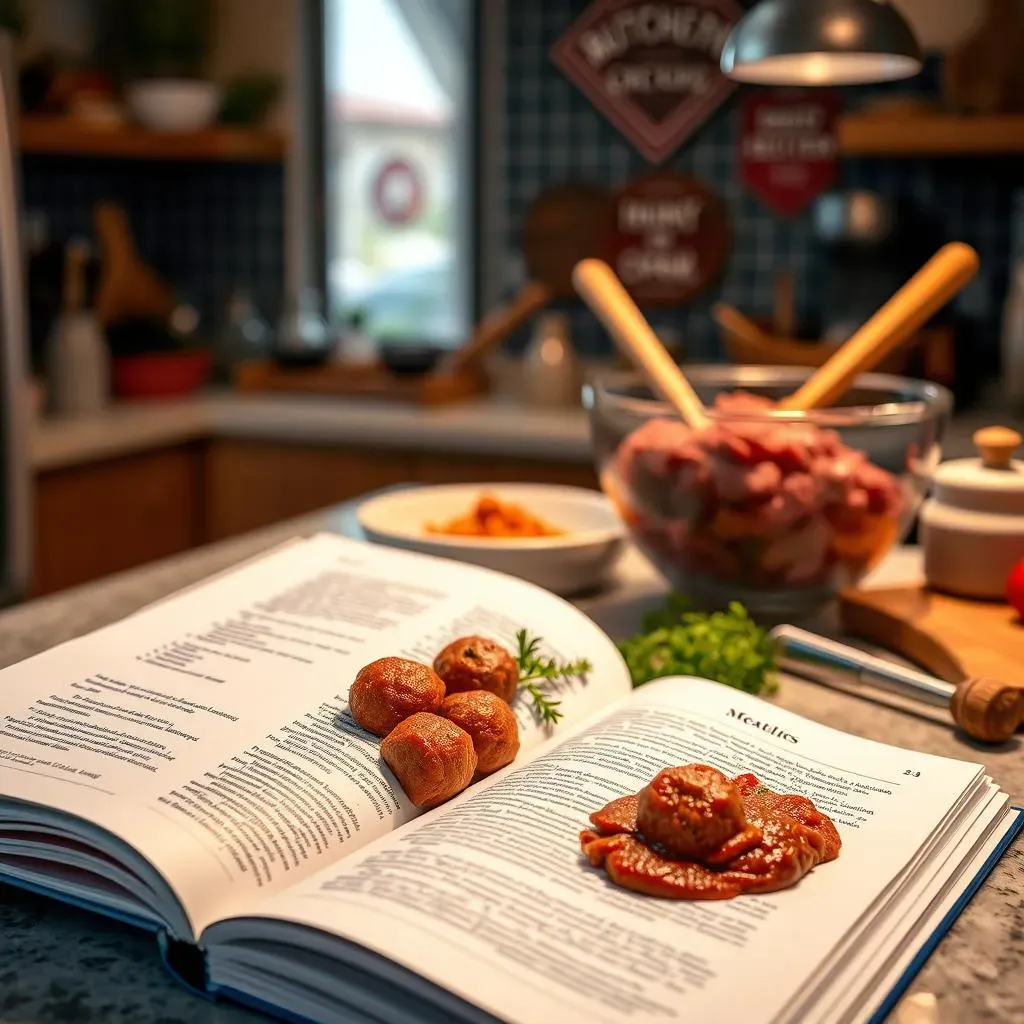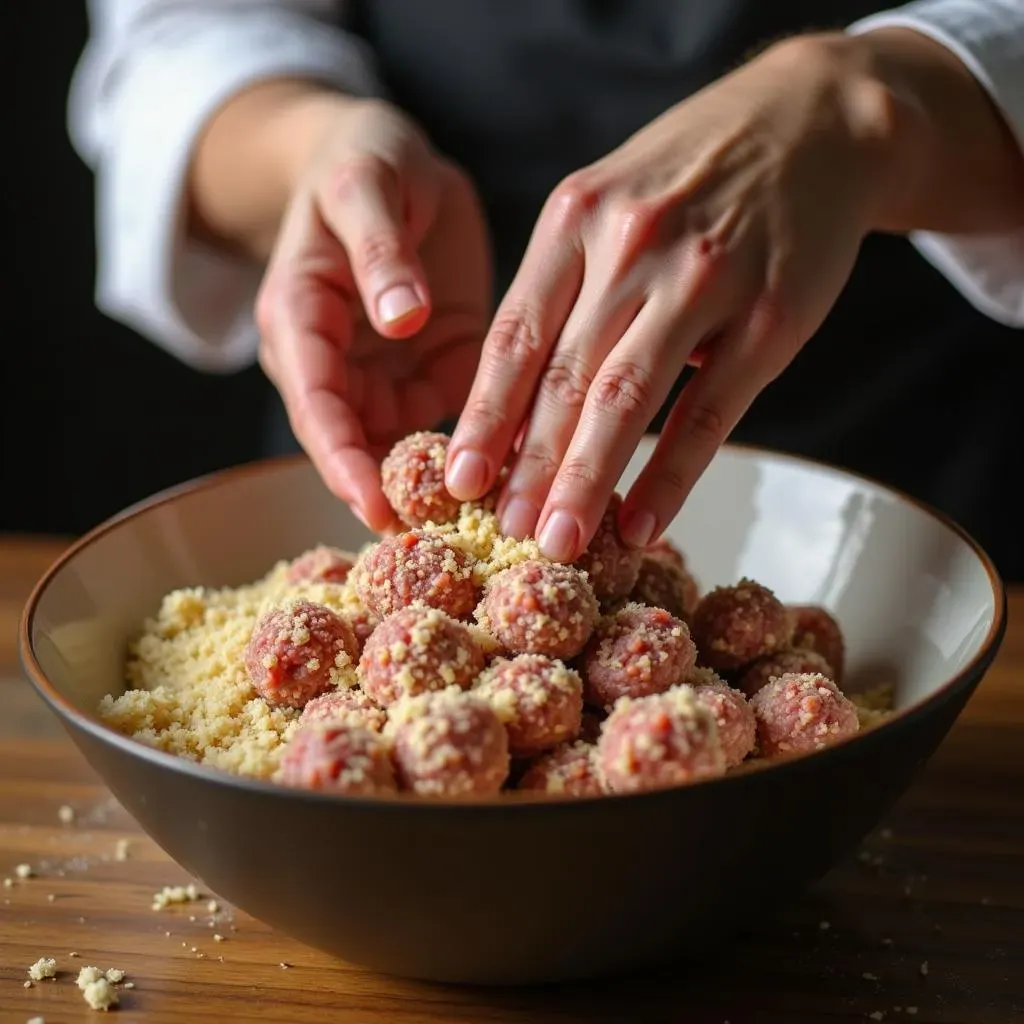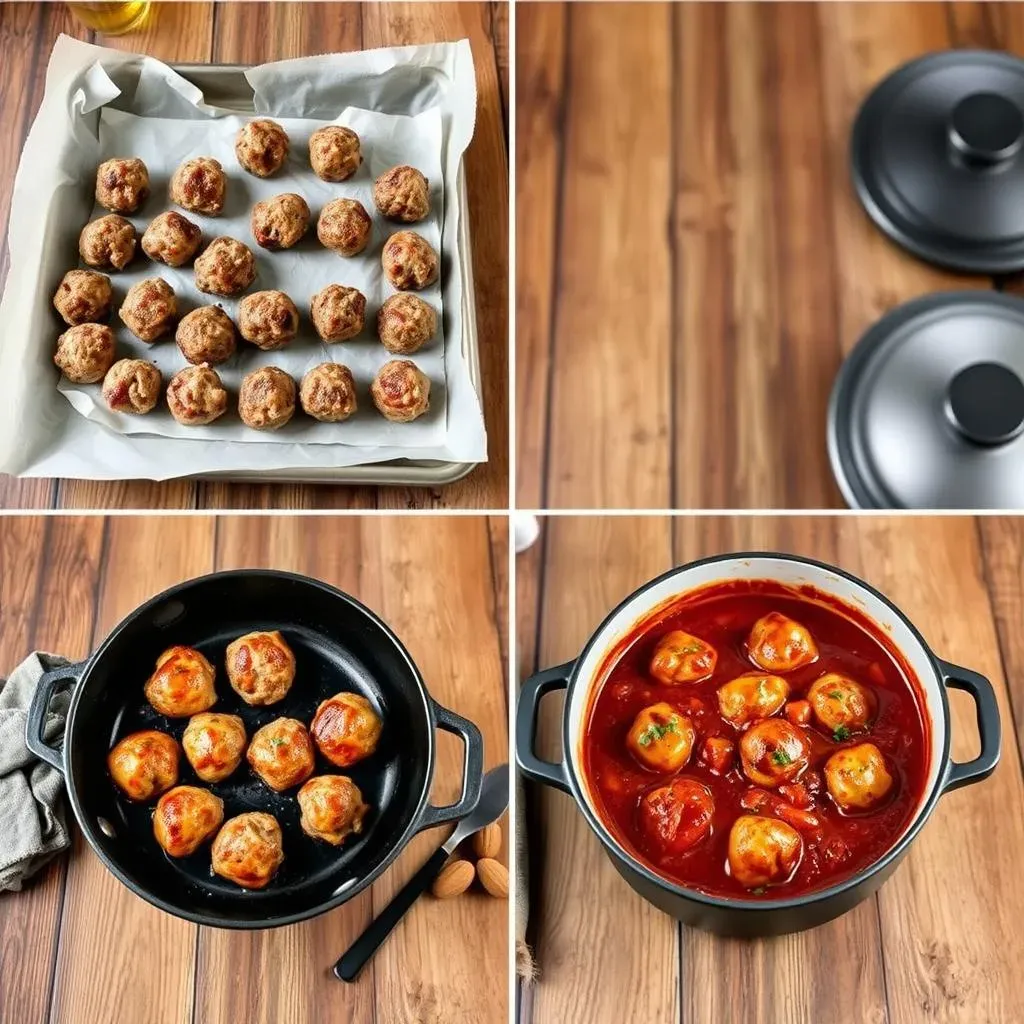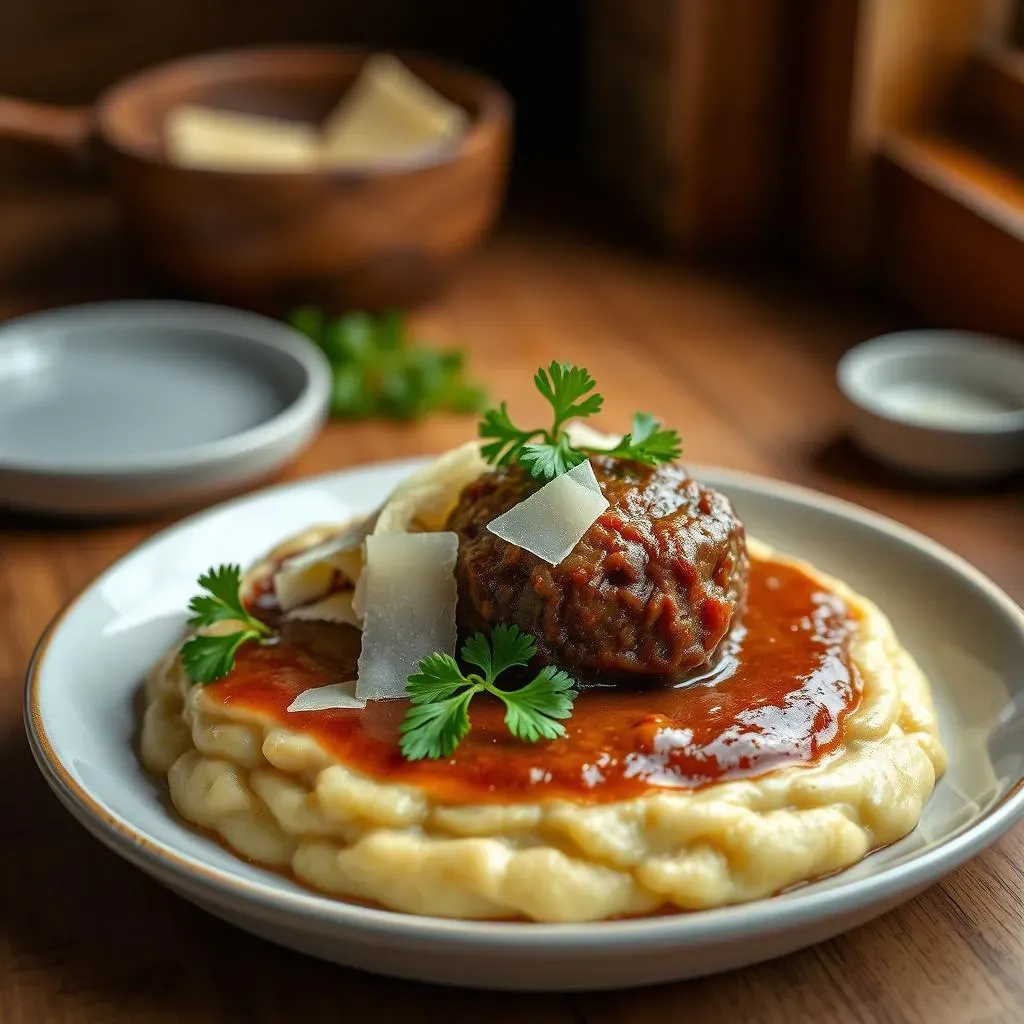Table of Contents
Are you ready to discover the ultimate "best meatball recipe beef only"? Forget everything you think you know about bland, dry meatballs. This isn't your grandma's recipe (unless your grandma was a culinary genius, in which case, hats off to her!). We're diving deep into the world of beef meatballs, exploring the secrets to achieving juicy, flavorful perfection every single time. This isn't just a recipe; it's a journey. We'll start by selecting the ideal ground beef, ensuring a foundation of rich flavor. Then, we'll master the art of the meatball mix, learning techniques to create that perfect texture—tender on the inside, nicely browned on the outside. Next, we'll explore various cooking methods, from oven-baking to pan-frying and slow simmering, helping you find the perfect approach for your kitchen and taste. Finally, we'll go beyond the classic spaghetti and marinara, unveiling creative serving suggestions that will impress your family and friends. Get ready to elevate your meatball game—this is your guide to creating the best beef meatballs you've ever tasted. Let's get started!
Ingredient Spotlight: Choosing the Best Ground Beef

Ingredient Spotlight: Choosing the Best Ground Beef
Picking the right ground beef is the cornerstone of amazing meatballs. Forget that lean stuff; we're aiming for flavor and juiciness! Look for a blend with at least 15% fat—this fat renders during cooking, keeping your meatballs moist and tender. Think of it like the secret ingredient to a perfectly juicy burger. An 80/20 blend is a fantastic starting point. You can find this easily at most grocery stores. But, don't be afraid to experiment! Some butchers even offer custom blends, allowing you to dial in the perfect fat content for your recipe. For a richer flavor, consider using ground chuck, which often has a more intense beefy taste than other cuts. Want a leaner option? Ground sirloin is a good choice, but remember to keep an eye on moisture and add a little extra fat if needed. And remember, fresh is best! Buy your ground beef the day you plan on making your meatballs for the best results.
Ground Beef Type | Fat Content (%) | Flavor Profile | Meatball Suitability |
|---|---|---|---|
Ground Chuck | 80/20 (or higher) | Rich, beefy | Excellent |
Ground Sirloin | 90/10 (or higher) | Leaner, milder | Good (may need fat addition) |
Ground Round | 93/7 (or higher) | Leanest, mildest | Fair (significant fat addition recommended) |
Now, let's talk about those "best beef only meatball recipe" options. If you're looking for something a little different, check out this recipe. It's a great starting point, and you can always tweak it to your liking! If you're feeling adventurous, you could even try adding some finely chopped mushrooms or herbs to your beef for extra flavor.
- Look for at least 15% fat content.
- Ground chuck is a great option for rich flavor.
- Fresh ground beef delivers the best results.
One final tip: Don't be afraid to ask your butcher for advice. They're experts, and they can help you find the perfect ground beef for your meatball masterpiece. Plus, supporting local businesses is always a good idea! Speaking of local businesses, if you're looking for a recipe that uses a different type of meat, check out this recipe for some inspiration.
Mastering the Meatball Mix: Techniques for Perfect Texture

Mastering the Meatball Mix: Techniques for Perfect Texture
The Importance of Gentle Handling
Think of your meatball mixture like a delicate dance partner. You want to combine all the ingredients, but you don't want to bruise them! Overmixing develops the gluten in the breadcrumbs, resulting in tough meatballs. Instead, use a light hand, gently incorporating the ingredients until they're just combined. Imagine you're folding in the ingredients rather than aggressively mixing them. This gentle approach ensures tender, juicy meatballs. Too much mixing creates a dense, compact mixture that will result in tough meatballs. For a visual, imagine kneading bread dough versus gently mixing cookie batter. The meatball mixture should be cohesive but not overworked.
For extra tips and tricks, check out this easy beef meatballs recipe It has some great advice on getting the texture just right. Remember, even small changes can make a big difference in the final product!
- Gently combine ingredients.
- Avoid overmixing.
- Aim for a cohesive but not compact mixture.
The Breadcrumb Balancing Act
Breadcrumbs are your secret weapon for achieving the perfect meatball texture. They add structure and moisture, preventing your meatballs from becoming dry and crumbly. But, too many breadcrumbs, and your meatballs will be dense and heavy. Aim for a ratio that balances moisture and structure. A good starting point is 1/2 cup of breadcrumbs per pound of ground beef, but you can adjust this based on the moisture content of your ground beef and the type of breadcrumbs you use. Fresh breadcrumbs tend to absorb more liquid than dried breadcrumbs. If your mixture seems too wet, add a little more breadcrumbs; if it's too dry, add a splash of milk or water.
If you're curious about other meatball variations, you might enjoy this beef and pork meatball recipe. It uses a different meat combination, but the principles of achieving the perfect texture remain the same. It's all about finding the right balance!
Breadcrumb Type | Absorption Rate | Recommended Adjustment |
|---|---|---|
Fresh Breadcrumbs | High | May need slightly more |
Dried Breadcrumbs | Low | May need slightly less |
Chill Out for Better Meatballs
This might sound strange, but chilling your meatball mixture before shaping and cooking is a game-changer. Allowing the mixture to rest in the refrigerator for at least 30 minutes allows the flavors to meld and the breadcrumbs to absorb the moisture. This chilling step also firms up the mixture, making it easier to shape the meatballs without them falling apart during cooking. Think of it as giving your meatballs a chance to relax and get ready for their close-up. The chilling process helps to create a more stable mixture that holds its shape better during cooking.
Need more ideas for delicious meatball recipes? Check out this collection of beef mince meatball recipes for some inspiration. You'll find a variety of options to explore!
Cooking Methods: OvenBaked, PanFried, or SlowSimmered?

Cooking Methods: OvenBaked, PanFried, or SlowSimmered?
Oven-Baked: For Perfectly Even Cooking
Oven-baking is a fantastic method for achieving consistently cooked meatballs. The even heat distribution ensures that your meatballs cook through without burning on the outside. Preheat your oven to 375°F (190°C). Arrange the meatballs on a baking sheet lined with parchment paper or a silicone baking mat to prevent sticking. Bake for 20-25 minutes, or until the internal temperature reaches 160°F (71°C), flipping halfway through for even browning. This method is perfect for large batches and offers minimal hands-on time. Plus, you can easily toss them in your favorite sauce once they're cooked. For a complete guide on oven-baked meatballs, check out this oven-baked beef meatballs recipe.
- Preheat oven to 375°F (190°C).
- Bake for 20-25 minutes, flipping halfway.
- Internal temperature should reach 160°F (71°C).
Pan-Frying: For Crispy Perfection
If you crave that irresistible crispy exterior, pan-frying is your best bet. Heat a generous amount of olive oil or another high-heat oil in a large skillet over medium-high heat. Carefully place the meatballs in the hot oil, ensuring not to overcrowd the pan. Brown them on all sides, about 4-5 minutes per side, until they're nicely browned and cooked through. This method produces a beautiful crust while still keeping the inside tender. Just remember to adjust your cooking time depending on the size of your meatballs. For a recipe that focuses on pan-frying, check out this ultimate fried beef meatball recipe.
Cooking Method | Pros | Cons |
|---|---|---|
Oven-Baking | Even cooking, less hands-on | Can be less crispy |
Pan-Frying | Crispy exterior | Requires more attention, browning may be uneven |
Slow-Simmering: For Maximum Flavor Infusion
Slow simmering is the ultimate method for infusing your meatballs with incredible flavor. Gently simmer the meatballs in your favorite sauce for at least an hour, or even longer. The low and slow cooking process allows the sauce to penetrate the meatballs, resulting in an explosion of flavor in every bite. This method is ideal if you're making a hearty meatball stew or a classic spaghetti and meatballs dish. It's a perfect way to develop the meatball's flavor and make them incredibly tender. For some inspiration, check out this beef meatball gravy recipe.
- Simmer in sauce for at least 1 hour.
- Allows for maximum flavor absorption.
- Produces incredibly tender meatballs.
Serving Suggestions: Beyond Spaghetti and Marinara

Serving Suggestions: Beyond Spaghetti and Marinara
Beyond the Classic: Expanding Your Meatball Horizons
Let's face it, spaghetti and marinara is a classic for a reason. But our perfectly crafted beef meatballs deserve more than just one starring role! Think outside the pasta box and explore a world of flavor combinations. One simple yet elegant option is to serve your meatballs on top of creamy polenta, a comforting and satisfying base that perfectly complements the richness of the beef. The smooth texture of the polenta contrasts beautifully with the hearty meatballs, creating a delightful textural experience.
For a heartier meal, consider adding your meatballs to a hearty minestrone soup, or even a robust beef stew. The meatballs will add a delightful meaty element and a satisfying chewiness to the soup. And if you're feeling particularly adventurous, try using them as a topping for a baked potato or sweet potato. The savory meatballs pair well with the earthy sweetness of the potato, offering a balanced and delicious meal.
- Polenta
- Minestrone Soup
- Beef Stew
- Baked Potato Topping
Global Inspiration: Meatball Adventures Around the World
Why limit yourself to Italian-inspired dishes? The versatility of our beef meatballs knows no bounds! Explore global cuisines and create exciting new flavor combinations. Try a Mediterranean twist by serving your meatballs with a vibrant Greek salad, adding a refreshing crunch and a burst of Mediterranean flavors. The tangy feta cheese and the juicy tomatoes complement the savory meatballs perfectly.
For an Asian-inspired dish, consider using your meatballs in a flavorful teriyaki glaze, or even serving them as part of a hearty noodle bowl. The sweet and savory teriyaki sauce adds a unique dimension to the meatballs, while the noodles provide a comforting and satisfying base. For a unique twist, check out this beef kofta meatball recipe—it's a delicious departure from the classic Italian style!
Cuisine | Serving Suggestion | Flavor Profile |
|---|---|---|
Mediterranean | Greek Salad | Tangy, fresh |
Asian | Teriyaki Glaze, Noodle Bowl | Sweet, savory |
Meatball Subs and Sliders: A Crowd-Pleasing Approach
Looking for a fun and easy way to serve your meatballs? Meatball subs or sliders are a guaranteed crowd-pleaser! Simply place your cooked meatballs in toasted hoagie rolls or slider buns, and top with your favorite sauce, cheese, and vegetables. This is a great way to use up leftover meatballs, and it's perfect for parties or casual gatherings. You can even get creative with your toppings, adding everything from caramelized onions to spicy peppers.
For more ideas on using your meatballs in creative ways, you might want to explore this beef meatballs with pasta recipe. While it features pasta, the focus is on creative ways to serve and enhance the meatball experience.